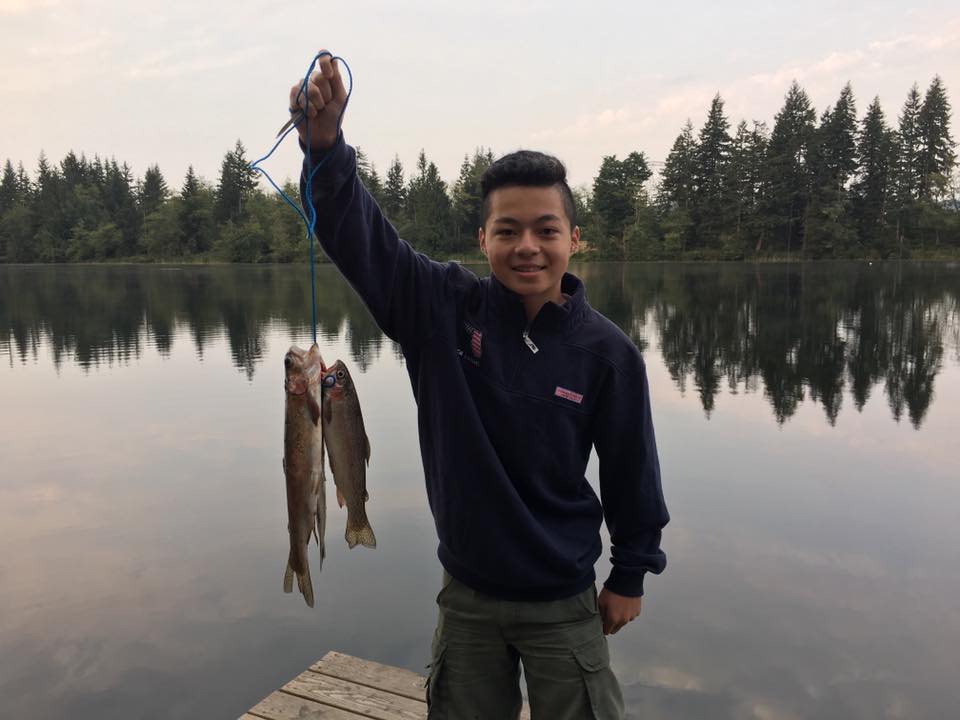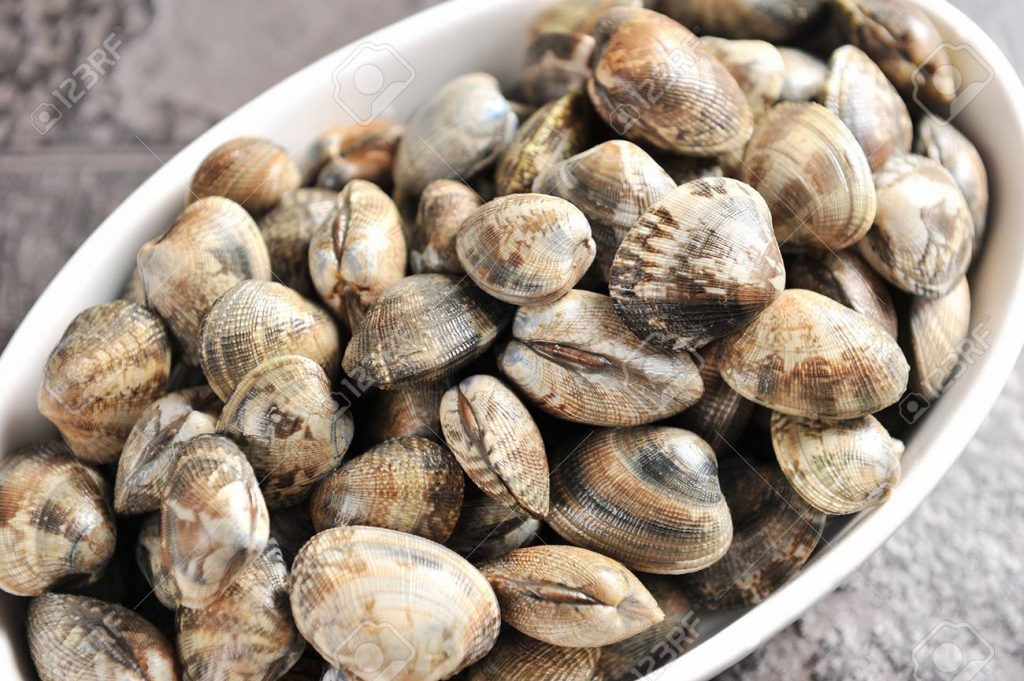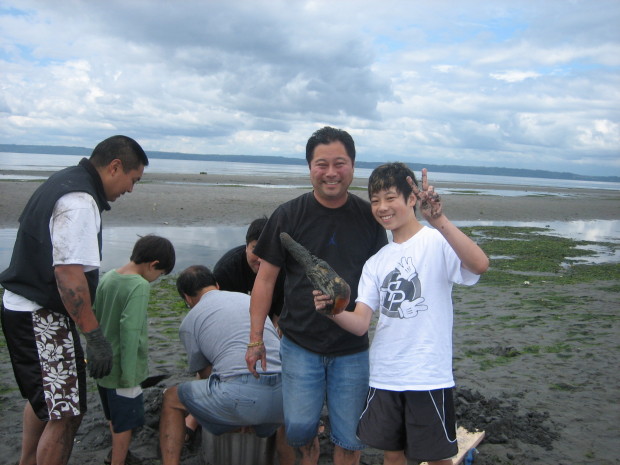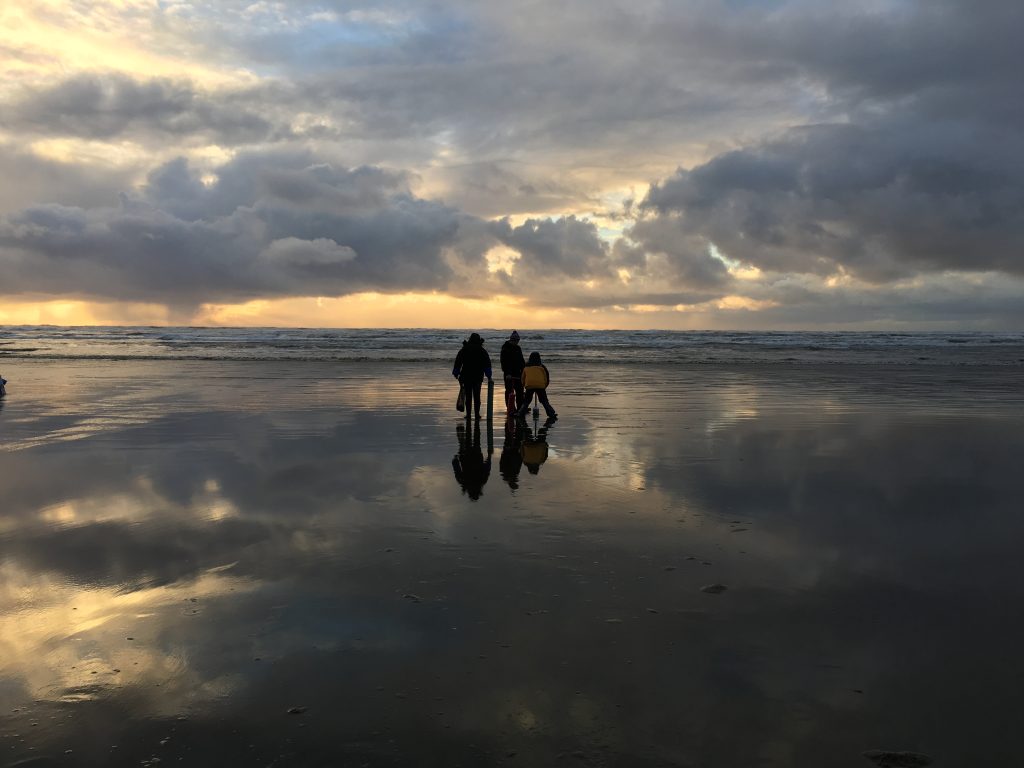Springtime outdoor options growing across the state from clam and oyster gathering to an ever expanding list of fishing choices Leave a reply

Contributed by Mark Yuasa, WDFW
Get ready for plenty of excitement in the days ahead whether you enjoy gathering a batch of shellfish from beaches or pursuing halibut, salmon, and trout.
First off, Puget Sound and Hood Canal will soon see the “big drain” with extreme daytime low tides exposing plenty of beach fronts providing a chance to harvest a relatively stable population of oysters and a variety of clams.
Further boosting why it’s a good time to head out now is beaches tend to be less crowded, oysters are in good condition ahead of their spawning period and water quality tends to be much better.
Before going make sure to know that all eastern mainland beaches from Everett south into most of southern Puget Sound are closed for shellfish gathering due to unsafe pollution levels.
Go to the WDFW shellfish safety map to see what beaches are open for shellfish gathering, and check out the Washington Department of Health website for additional information.

To find out when the best low tides occur, visit the WDFW tide chart and the saltwater tides website. Upcoming low tides – April 16, plus-0.5 feet at 11:29 a.m.; April 17, -0.7 at 12:05 p.m.; April 18, -1.7 at 12:44 p.m.; April 19, -2.3 at 1:27 p.m.; April 20, -2.4 at 2:15 p.m.; April 21, -2.1 at 3:07 p.m.; April 22, -1.4 at 4:06 p.m.; April 23, -0.6 at 5:15 p.m.; April 24, 0.2 at 6:23 p.m.; April 29, 0.5 at 11:02 a.m.; April 30, -0.3 at 11:32 a.m.; May 1, -0.9 at 12:01 p.m.; May 2, -1.3 at 1:05 p.m.; May 3, -1.3 at 1:05 p.m.; May 4, -1.2 at 1:41 p.m.; May 5, -0.8 at 2:21 p.m.; May 6, -0.3 at 3:06 p.m.; May 7, 0.3 at 3:56 p.m. Other excellent low tide periods will occur on May 14-22, and May 27-June 6.
Also make sure to visit the WDFW website for shellfishing rules, daily limits, and gathering etiquette like filling-in holes, shucking oysters on beaches, and leaving oyster shells on the beach where you found them.
Most importantly keep in mind to purchase your new 2022–2023 recreational hunting, fishing, and shellfish licenses. The 2021–2022 licenses ended on March 31. Anyone age 15 and older must have a valid license. A Discover Pass is required to park a vehicle at many state lands, including the state park system, WDFW lands, and the Department of Natural Resources lands.

Where to go shellfish gathering
In northern Puget Sound, Birch Bay State Park in Whatcom County is open year-round for shellfish and good for Manila, native littleneck, and butter clams. On Whidbey Island near Holmes Harbor is Freeland County Park which is open daily through May 31 and ideal for Manila clams. In Whatcom County, Drayton Harbor, open year-round is great for Manila, native littleneck clams and butter clams. On Whidbey Island, Twin Lagoons (formerly known as North Penn Cove) is open year-round for clams, mussels, and oysters.
In Hood Canal, Hahobas Beach is open year-round and boat accessible only for clams and abundant for oysters. Potlatch State Park/Potlatch DNR opened April 1 through May 15 only and is a top choice for oysters. TheQuilcene Bay WDFW Tidelands is open year-round beach and has a good number of Manila clams (minimum size for clams is 1 ½ inches) and Duckabush open through April 30 is primarily a Manila clam location. Head to Eagle Creek north of Lilliwaup or the Triton Cove Tidelands to gather oysters.
Options in southern Puget Sound are North Bay in Case Inlet open through April 30 for mainly Manila and native littleneck clams. Parking is very limited at North Bay so nearby options are Oakland Bay Tidelands (open year-round for mainly Manila clams and oysters) and Twanoh State Park (open year-round for oysters only). North of Olympia is Tolmie State Park is open year-round for clams and oysters. Illahee State Park near Bremerton is open for clams and an enhanced oyster bed from April 1 through July 31.
Other adventures

- Coastal beaches for razor clam digging have been excellent since the season opened last autumn, and digging is open during morning low tides only on Monday (April 4) at Long Beach, Twin Harbors, and Copalis; Tuesday (April 5) at Long Beach, Twin Harbors, and Mocrocks; and Wednesday (April 6) at Long Beach, Twin Harbors, and Copalis. More tentative digs are also planed on April 16-21 and April 29-30 and look for final approval on these digs possibly by the end of this week. Details can be found on the WDFW razor clam website.
- While the statewide lowland lakes trout fishing opener is April 23-24, anglers can head to many year-round lakes that have already been planted with thousands of rainbow trout averaging around 10- to 12-inches and “jumbo” trout weighing 1 pound or more. Spring is an ideal time to catch trout when water temperatures are cooler, and fish are willing to bite. A good number of these lakes also have good numbers of yellow perch, largemouth and smallmouth bass, crappie, bluegill, and catfish. To find out lakes planted with trout, go to the WDFW trout stocking website.
- In north central Washington, Lake Roosevelt and Rufus Woods Lake are pumping out a good number of large-sized rainbow trout and kokanee. Late in March, the Colville Confederated Tribe planted 23,157 triploid rainbow trout averaging 1.4 pounds apiece into Rufus Woods Lake, and more plants are planned in April and May.
- Halibut fishing in the eastern Strait of Juan de Fuca and some areas of Puget Sound (Marine Areas 6, 7, 8, 9, and 10) opens April 7 through May 21 and June 2-27 on Thursdays, Fridays, and Saturdays only, and May 27-29 and June 30, but could close sooner if catch quotas are achieved.
- Winter salmon fishing in the western Strait of Juan de Fuca off Sekiu (Marine Area 5) is open daily through April 30 for hatchery winter Chinook, and is fair to good around the Caves, Pillar Point, Mussolini Rock, Slide area, and Cod Fish Bay. Southern Puget Sound (Marine Area 13) is open year-round and has been fair for winter Chinook around the Tacoma Narrows and Fox Island locations.
- Catches along the Lower Columbia mainstem have picked up for spring Chinook and fishing is open daily through April 6 below Bonneville Dam. At Bonneville Dam the fish counts have started to see more spring Chinook arriving daily. The Columbia River mainstem above Bonneville Dam from Tower Island power lines upstream to the OR/WA border are open April 1 through May 5. The spring Chinook forecast of 197,000 adult fish in 2022 is up a good amount from an actual return of 152,675 in 2021.
(Mark Yuasa is a Washington Department of Fish and Wildlife Communications Consultant and longtime contributor to ESPN 710 KIRO The Outdoor Line. He also was the fishing and hunting reporter at The Seattle Times for 28 years.)

